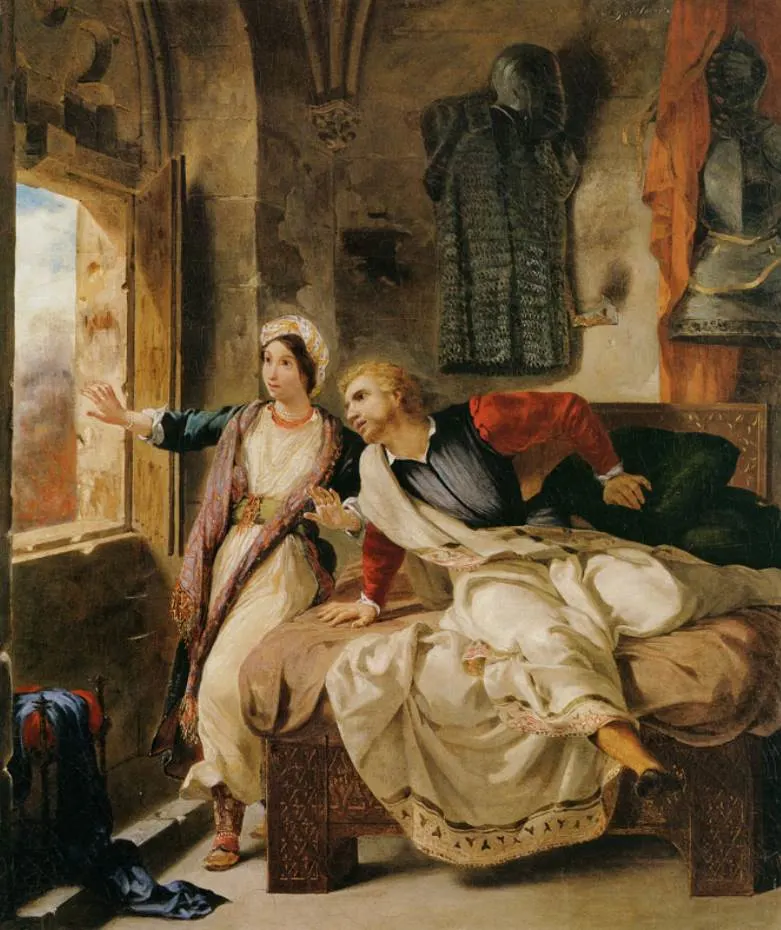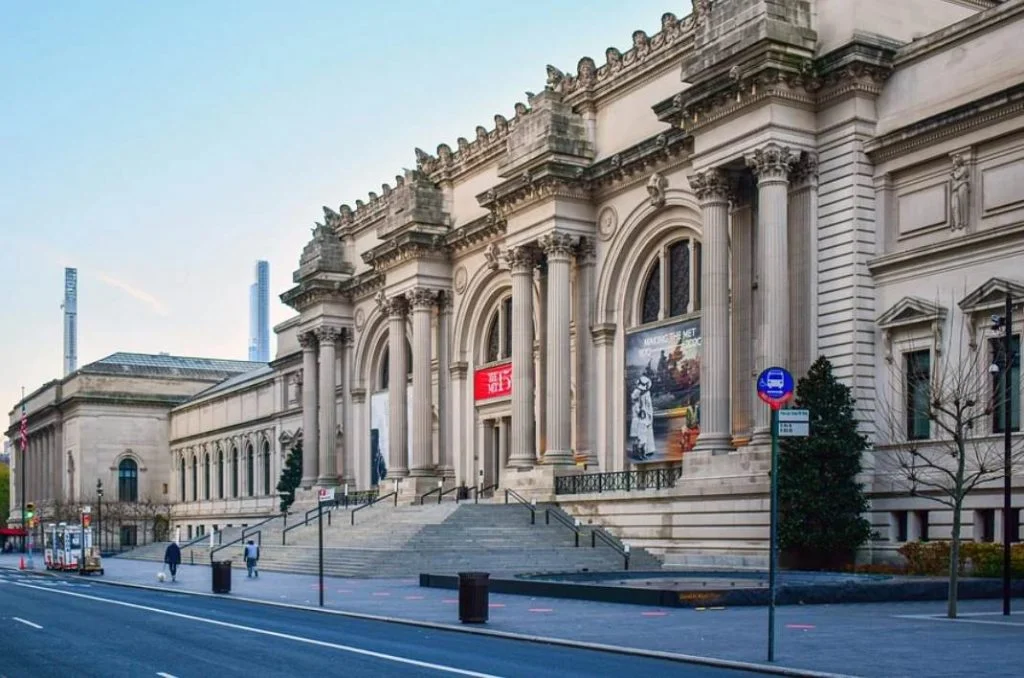One of the greatest Scottish novelists in history was the inspiration for one of the most renowned French artists of the 19th century. This artist was Eugène Delacroix (1798-1863), the leading Romantic artist of his time.
Let’s take a closer look at some of his most interesting facts about a work called “The Abduction of Rebecca,” one of the most famous Delacroix paintings for several reasons.
1. It was painted over 2 decades after Delacroix’s breakthrough
The Abduction of Rebecca is described as one of the greatest paintings by Eugène Delacroix,” a man who became the leading artist of the French Romantic School in the 19th century.
He started his career painting scenes driven from the Greek War of Independence in the 1820s such as “The Massacre at Chios” (1824) and “Greece on the Ruins of Missolonghi” (1826). These were produced shortly after his debut at the Paris Salon in 1822 with a work called “The Barque of Dante” (1822).
Although his works were heavily criticized by conservative critics, he kept true to his style which was a complete move away from the ideals of the Neoclassical artists of the late 18th and early 19th centuries.
This dramatic work was painted in 1846, well over 2 decades after his first work was displayed publicly.

2. It depicts a scene derived from a novel written by Sir Walter Scott
One of the greatest inspirations for artists of the French Romantic School was renowned Scottish author Sir Walter Scott (1771-1832). Some of his works are still considered to be absolute classics today, including Ivanhoe (1820), Rob Roy (1817), Waverley (1814).
This particular painting depicts a scene driven from Ivanhoe, a work that was published in 1820 and translated into French in 1821. This historical novel is set in 12th-century England and is a classic tale of medieval chivalric romance.
The Jewish heroine Rebecca can be seen taken away from the castle of Front de Boeuf by two Muslim warriors. These were hired by the greedy Templar Bois-Guilbert in order to take her to safety.

This happened during the Sack of the Castle of Front-de-Boeuf which can be seen burning in the background.

3. Delacroix already painted the prequel to this scene in 1823
We can only imagine that Eugène Delacroix was the first in line to purchase a copy of Ivanhoe after it was translated to French in 1821. This is emphasized by the fact that he already painted a work derive from Scott’s novel in 1823.
This painting is called “Rebecca and the Wounded Ivanhoe” and depicts the scene just before Rebecca is being abducted by the two Muslim warriors.
This is a small painting by Delacroix’s standard as it only has dimensions of 64.5 × 53.7 centimeters (25.39 x 21.14 inches).

4. It was displayed at the Paris Salon of 1846 under a different title
Just like many famous paintings by Delacroix before, this work was displayed at the Paris Salon of 1846. It was displayed under the title “Rebecca Abducted at the Order of the Templar Bois-Guilbert during the Sack of the Castle of Front-de-Boeuf.”
The artist also added a note in the catalogue of the Salon mentioning “She is already in the hands of the two African slaves who have been instructed to take her far away from the scene of battle.”
5. The painting wasn’t received well by critics at the Salon
The conservative critics at the Paris Salon were never the biggest fans of the Romantic painters, including the likes of Delacroix. They considered this art movement too far away from the Neoclassical order they were accustomed.
One critic mentioned that the artist sacrificed the fundamentals of art such as drawing, modeling, and colors, t enhance the dramatic effect of the overall composition.
This doesn’t mean that all critics thought alike. The more progressive ones actually praised the use of colors in order to enhance the passions and expressions, classifying Delacroix as a supreme colorist.

6. The artist completed another version of the work 12 years later
The artist wasn’t completed with this particular passage in Ivanhoe after completing the prequel to the scene in 1823 and the Abduction of Rebecca in 1846. Delacroix completed another version 12 years later.
The version completed in 1858 depicts the same scene as the one painted in 1846 although the composition is quite different, especially since the Castle of Front-de-Boeuf is displayed more prominently.
This painting is one of the many paintings by Delacroix in the collection of the Louvre Museum in Paris and was first displayed at the Paris Salon of 1859.

7. How big is The Abduction of Rebecca by Eugène Delacroix?
Eugène Delacroix painted several monumental works of art in his career. His most famous work, Liberty Leading the People (1830) has dimensions of 260 × 325 centimeters (102.4 × 128.0 inches), to give just one examples.
The Abduction of Rebecca is relatively small in comparison as it only has dimensions of 100.3 × 81.9 centimeters (39.5 × 32.2 inches).
The version completed in 1858 is only slightly bigger as well with dimensions of 105 x 81.5 centimeters (41.3 x 32 inches).
8. Where is the painting located today?
The painting changed hands multiple times after being acquired for just 2,900 francs shortly after the Paris Salon of 1846. The price for which it was sold subsequently was between 2,200 and 30,000 francs until it was bought by David C. Lyall who hung it in his Brooklyn mansion between 1888 and 1892.
It was acquired by Paul Durand-Ruel, a French art dealer who sold half his share in the painting to art dealership Knoedler in 1903.
Today, the painting is part of the collection of the MET in New York City, one of the most famous museums in the world which also owns the prequel to this scene, “Rebecca and the Wounded Ivanhoe” (1823).

